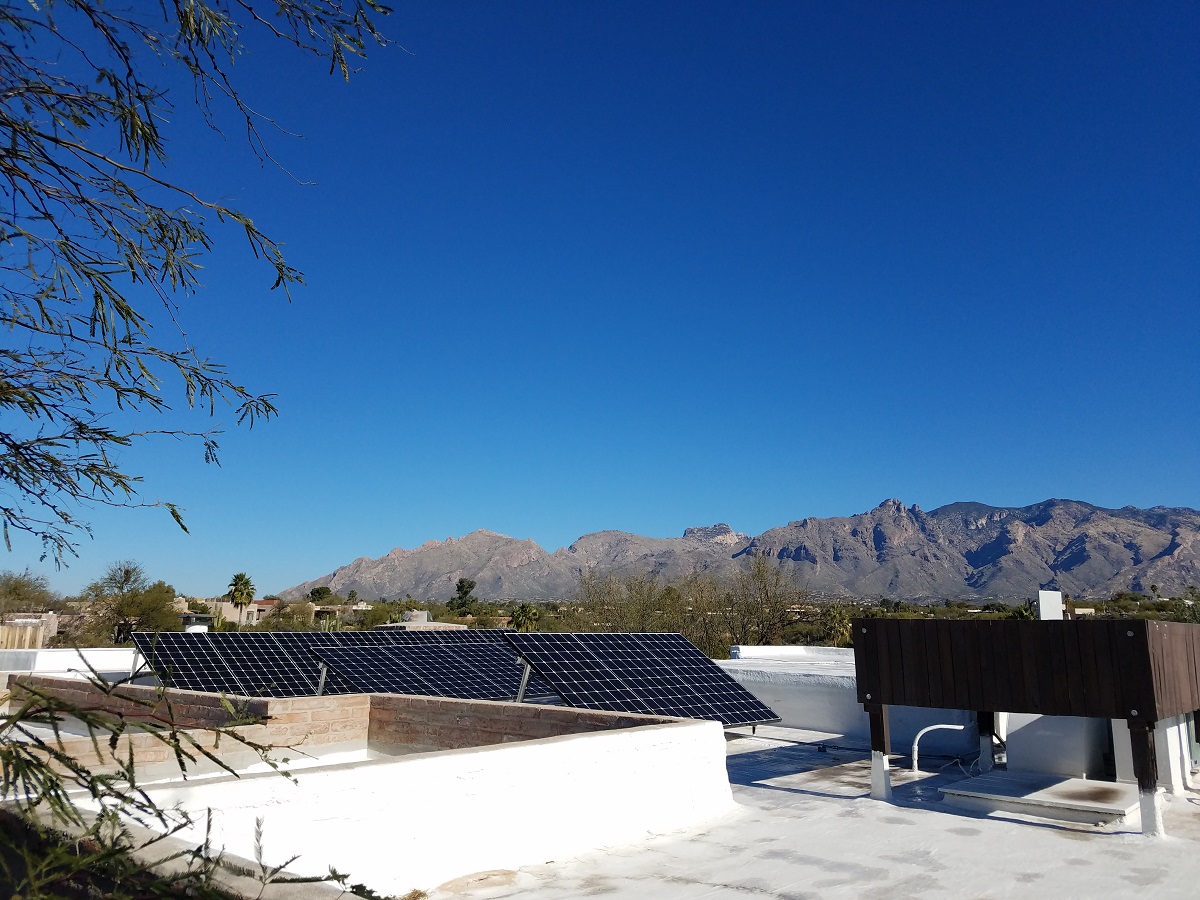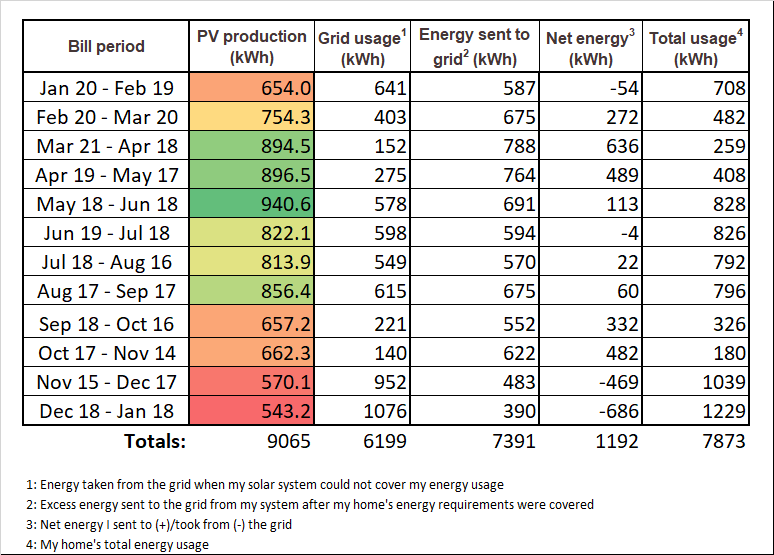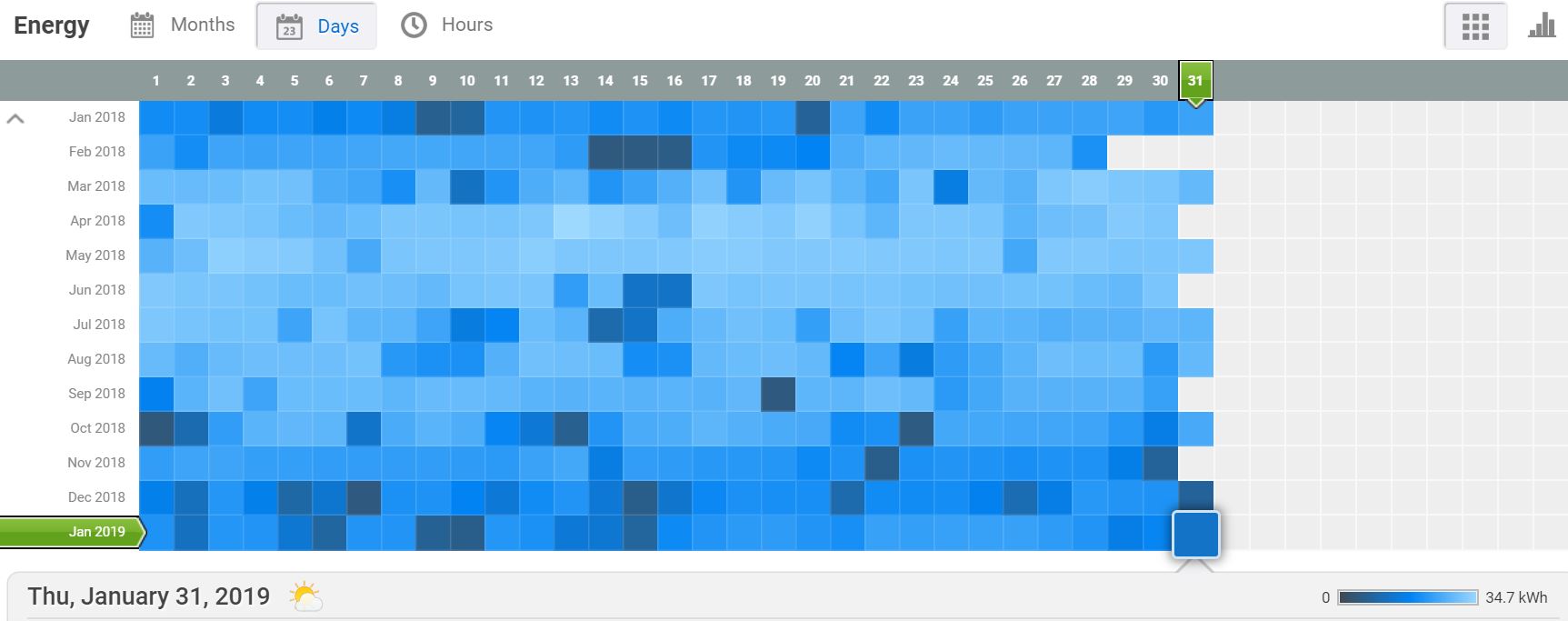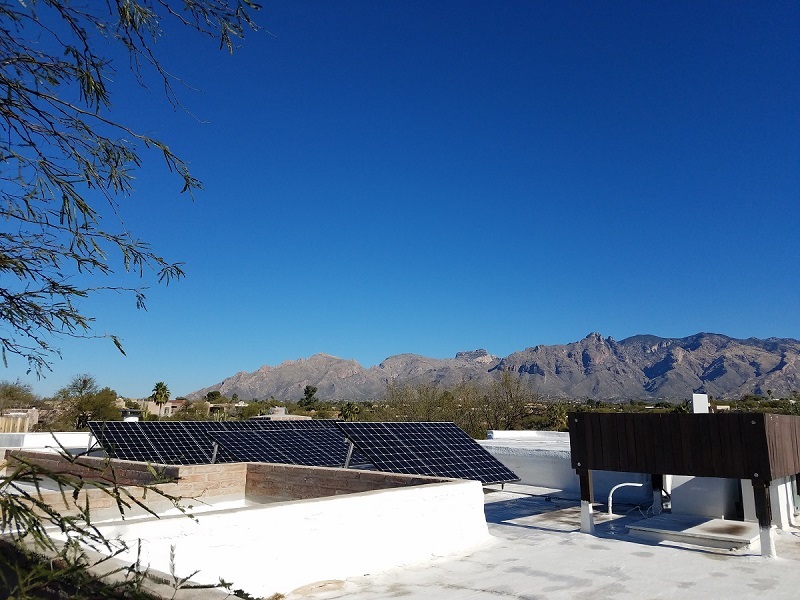January 14 marked the 3-year anniversary of my solar PV system getting connected to the grid. Each of the past two anniversaries, I’ve written up a summary of my solar data for the year and shared it here (click for year 1 data and year 2 data). My love for numbers hasn’t gone away and neither has my goal to help others learn more about solar energy, so I’ve decided to continue the tradition and share my system and cost data for a third year.
Before I continue, it’s important to note that the financial picture for residential solar energy in Arizona has changed since I had my system installed in 2015. This means the numbers I report for costs won’t be consistent with numbers for someone installing a system in Tucson this year. Nevertheless, for many people, solar energy can still be a sound decision from a financial standpoint. If you want to find out what the numbers look like for your home, I encourage you to talk to the very knowledgeable staff at Net Zero Solar, the company I got my system from.
System summary (copied from last year’s post)
I made my purchase in December 2015, just in time to get the tax credit on my 2015 taxes instead of having to wait a full year. After getting proposals from three companies (2 local, 1 national), I decided to go with one of the local companies, Net Zero Solar. Net Zero’s proposal was the least expensive, and it was also clear they really know their stuff and are in the solar business because they think it’s an important thing to do. They’re also down-to-earth and upfront about benefits, downsides, the local utility’s compensation, etc. And I know a bit about solar so I definitely tested them to double check!
Here are the technical details for my system:
- 5.13 kW array
- Comprised of 18 285 kW LG PV panels
- Includes 18 Enphase microinverters
- Unirac SolarMount mounting system
- Array azimuth of 160° from true north
- Panels angled at 20° and 30° from the horizontal (some rows are higher than the others) on my flat roof
- Estimated annual PV generation: 9,571 kWh
Installed system cost: $16,290.
Tax credits: $1,000 Arizona tax credit and $4,887 federal tax credit
Net system price: $10,403

My solar panels! Or at least some of them. And yes, I climbed a tree to take this picture .
My electricity costs before and immediately after going solar
I bought my house in July 2015. My electric bills for August 2015 through January 2016 were: $107, $122, $64, $60, $228; $117. My house is fully electric (no gas), so my expensive months are in the summer when I’m cooling the house and the winter when I’m heating the house (I have a heat pump that both heats and cools the house; no air conditioning!). Autumn and spring are great; I barely have to use my heat pump at all. On top of that, I applied a lot of energy efficiency measures in September and October 2015, and those energy savings were reflected in my bills.
My system was turned on in mid-January 2016. My net electricity cost from then until January 2017 was $138.28.
My net electricity cost from February 2017 to January 2018 was $169.77. The increase was due to slight increases in utility fees and slightly higher energy usage than the previous year.

My electric bills before and after going solar.
My electricity costs for the last 12 months
Let’s get straight to the point: my net electricity cost in the last 12 months (February 2018 to January 2019) was $267.89.
That total includes a monthly bill, which is usually around $18 to $19 dollars. There was only one month that my bill was significantly higher. That was January 2019, when my bill was $94.74. there are a few reasons for this. First, since I have a heat pump rather than gas, and late December/early January was particularly cold this season, I used a lot of electricity to heat my house. Second, I had guests in my house, who are not always as careful about energy usage as I am. Third, my solar credits with my utility refresh every October, and I hadn’t built up enough extra credit yet to overcome the extra usage.
The total costs for the last 12 months also includes a $37.84 credit in October for the extra energy my system produced from October 2017 to September 2018 (1919 kWh total). This was a lower rate per kWh than I had received in previous years.
The nitty gritty: month-by-month energy generation and usage
I’ve included my monthly energy production and usage details for January 2018 through January 2019 in the table below:

My energy production and usage details for the last year.
Since I’ve based this on my billing cycles, some months are slightly longer than others. Still, you can get a sense of how well the system performed monthly. In the “PV production” column, green indicates more production while red indicates less.
In total, my PV system produced 9,065 kWh in the last 12 months (compared to 9,165 kWh last year and 9,467 kWh in year 1). This slight decrease could be due to different weather, slight degradation of the panels’ performance, or both.
My best months were March through May, when it’s hot and sunny in Tucson but monsoon season hasn’t started yet. Conversely, my worst months were December and January, when daylight hours are lowest.
Enphase provides a really cool monitoring service for people whose PV systems use Enphase microinverters. It lets you see your system’s production year-to-year, month-to-month, day-to-day, and even hour-to-hour. Here’s a screenshot that shows my daily production for the last 12 months:

Screenshot of my Enphase Enlighten solar production data for the second year. The lighter the box, the more my system produced that day.
One final important point: my usage was 7,873 kWh, compared to 7,422 kWh last year and 6,855 kWh the year before. Some of this is due to me needing to upgrade my energy efficiency measures (i.e. new caulking and doors/window sealing), and some is due to the extra people I had in my house for part of the year.
Summary
My total electricity costs went up by about $100 for the year. There were 3 reasons for this:
- My solar production was down
- My usage was up
- My reimbursement from TEP was at a lower rate per kWh than in previous years
Nevertheless, I’m very happy with my PV system’s performance in the last year. $268 for a whole year’s worth of energy is something most households would envy!
Thanks for reading! Please feel free to share if you know anyone who could benefit from having a look at solar numbers!
Share this Post
